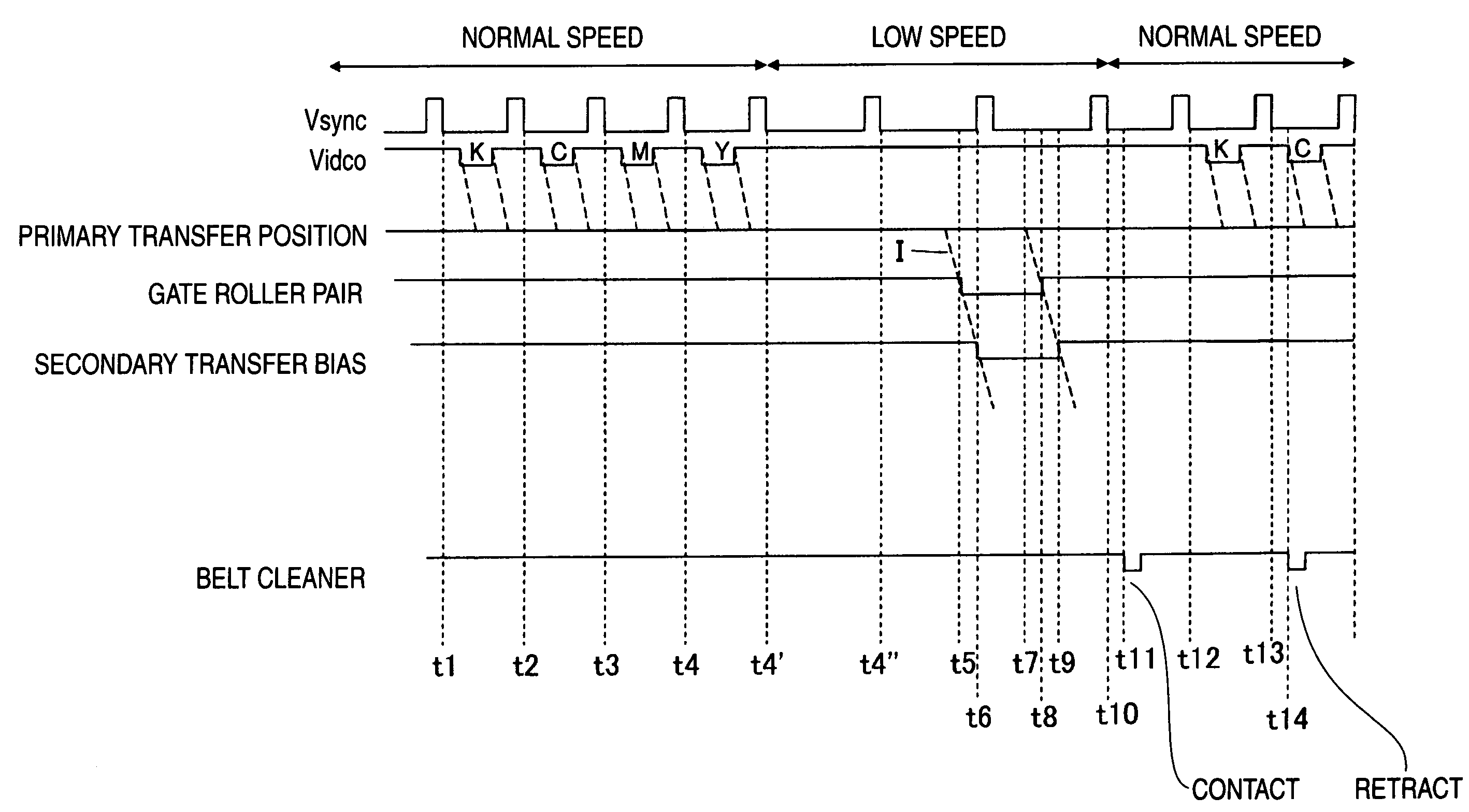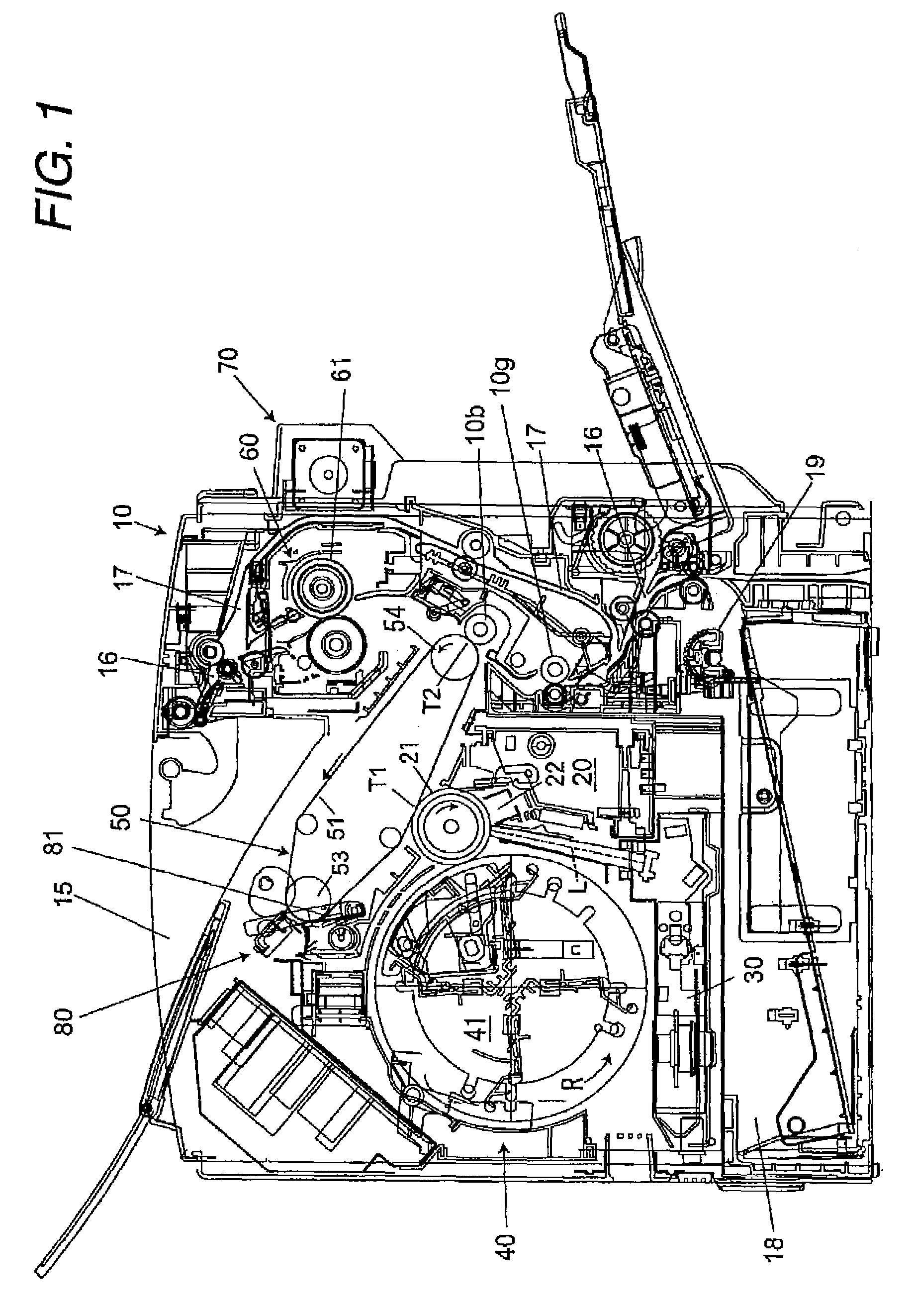Image forming apparatus with controlled timing of contact of cleaning blade against intermediate transfer member
a technology of image forming apparatus and transfer member, which is applied in the direction of electrographic process apparatus, instruments, optics, etc., can solve the problems of deviation or distortion, deviation or distortion of obtained images, instability of transfer operation, etc., and achieve the effect of preventing the decrease of the number of achievable image formation per unit tim
- Summary
- Abstract
- Description
- Claims
- Application Information
AI Technical Summary
Benefits of technology
Problems solved by technology
Method used
Image
Examples
Embodiment Construction
[0049]Embodiments of the invention will be described below in detail with reference to the accompanying drawings.
[0050]FIG. 1 shows an image forming apparatus according to one embodiment of the invention.
[0051]This image forming apparatus is adapted to longitudinally feed a sheet of A4 size (including the letter size) as a recording medium and then to form a full color image on both sides of the recording medium. The image forming apparatus comprises: a case 10; an image carrier unit 20 accommodated in the case 10; an exposure unit 30; a development unit 40; an intermediate transfer unit 50; and a fuser unit 60.
[0052]In the case 10, a frame of the main body of the apparatus is provided but not shown. Then, various units and the like are attached to this frame.
[0053]The image carrier unit 20 comprises: a photosensitive body 21 having a photosensitive layer in its outer periphery surface and thereby serving as an image carrier; and a corona electrostatic charger (scorotron electrostat...
PUM
 Login to View More
Login to View More Abstract
Description
Claims
Application Information
 Login to View More
Login to View More - R&D
- Intellectual Property
- Life Sciences
- Materials
- Tech Scout
- Unparalleled Data Quality
- Higher Quality Content
- 60% Fewer Hallucinations
Browse by: Latest US Patents, China's latest patents, Technical Efficacy Thesaurus, Application Domain, Technology Topic, Popular Technical Reports.
© 2025 PatSnap. All rights reserved.Legal|Privacy policy|Modern Slavery Act Transparency Statement|Sitemap|About US| Contact US: help@patsnap.com



